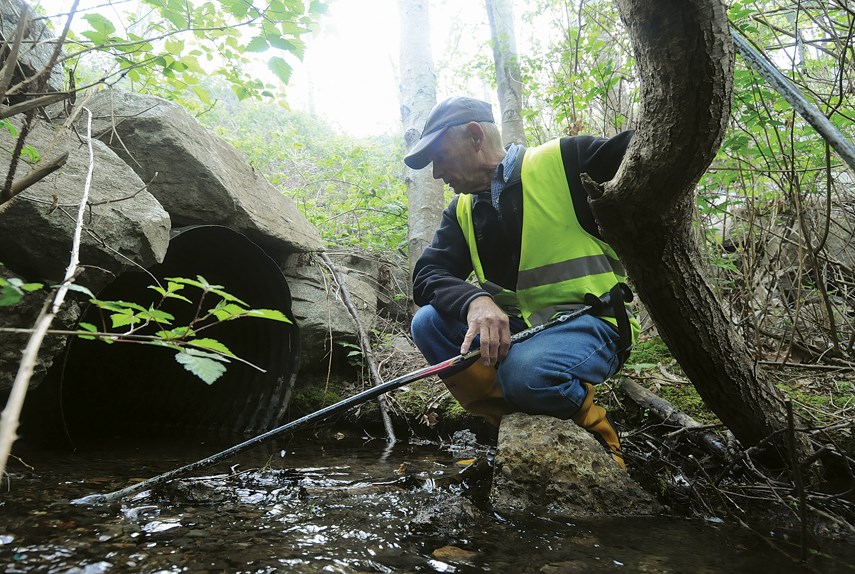The Ministry of Transportation and Infrastructure says human error by one of its contractors is to blame for the near-extinction of a local population of cutthroat trout.
On April 30, crews from Keller Foundations were doing work on a ministry project in Horseshoe Bay when discharge from the works yard’s cement plant spilled into Larson Creek, killing upwards of 80 cutthroat trout.
The ministry later hired an outside consultant to review whether its environmental management plan for the project was adequate and whether it was being followed.
“The contractor advised that it was his belief the water he was using to clean the batch plant was clean water, used within a clean system. He did not expect that the water would have a high pH; however, he did not test the water by measuring the pH and may not have been aware of the potential for the grout spoils to generate alkaline liquids,” the report stated.
The ministry’s environmental management plan was adequate, the report found, but the province could have done more to supervise the contractor, the consultant added.
“Although the environmental monitor attended the site and at the agreed schedule, there were aspects of the (environmental management plan) that do not appear to have been verified through the site visits,” the report stated.
Standing water tested at the site the next day, according to the report, had a pH level of 11.5 – about the same as household ammonia.
“This thing was so lethal, it might have killed everything in its path,” said John Barker, president of the West Vancouver Streamkeeper Society.
Barker said he was encouraged to see that the ministry hired an outside consultant to review the incident.
“But the ministry itself was really not diligent in checking up on their contractor,” Barker said. “Errors were made, which might have been caught otherwise.”
Now Barker is left wondering whether anyone will face penalties. It wasn’t clear from his discussions with the ministry whether the Department of Fisheries and Oceans or provincial Ministry of Environment were doing investigations of their own.
“There are people in the community that would like to see somebody that does this kind of thing pay the price. We’ve got all these laws in place and we’ve got penalties galore and yet, if none of them are ever acted on, why would anybody be fearful, whether its government, contractors or anybody, of Fisheries Act charges or charges under any other jurisdiction?” he said. “It just seems the right thing to do that somebody be held accountable.”
Environment and Climate Change Canada is looking into the matter.
“With regard to the Larson Creek incident, ECCC’s Enforcement Branch is still working with partners and continuing to gather all of the information relevant to the incident,” a statement from the department read.
In response, Keller Foundations’ project manager declined to comment as the investigation is still ongoing.Meanwhile, there is a glimmer of hope for Larson Creek as a fish-bearing stream.
In the months since die-off, Barker and District of West Vancouver parks staff have found numerous young cutthroat and fry that survived, likely because they were in a side channel at the time of the incident. There is no guarantee they will successfully spawn and sustain the creek for future generations of the genetically distinct trout, but the Streamkeepers will be watching closely, Barker said.
“The general feeling, and I think it’s correct, is nature has her own way. Let’s just see what evolves,” he said. “I’m hopeful the creek will slowly just repair itself and come back.”

.png;w=120;h=80;mode=crop)

